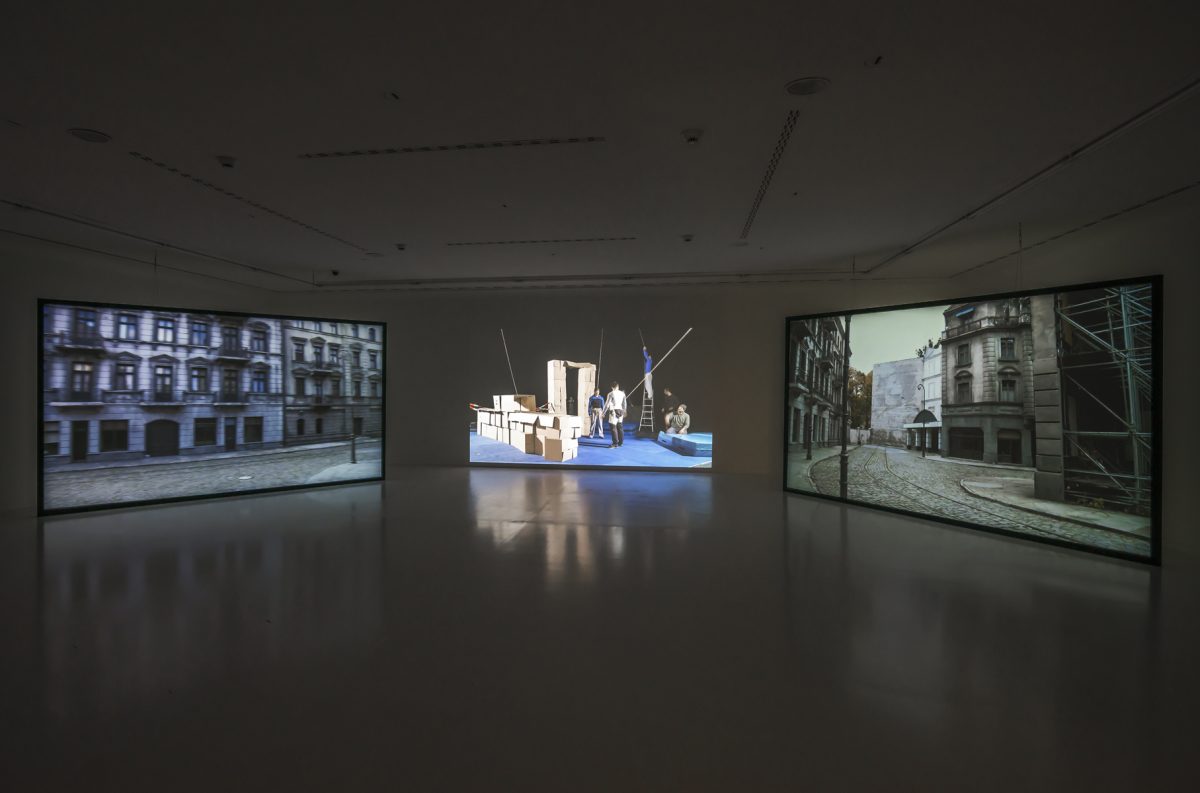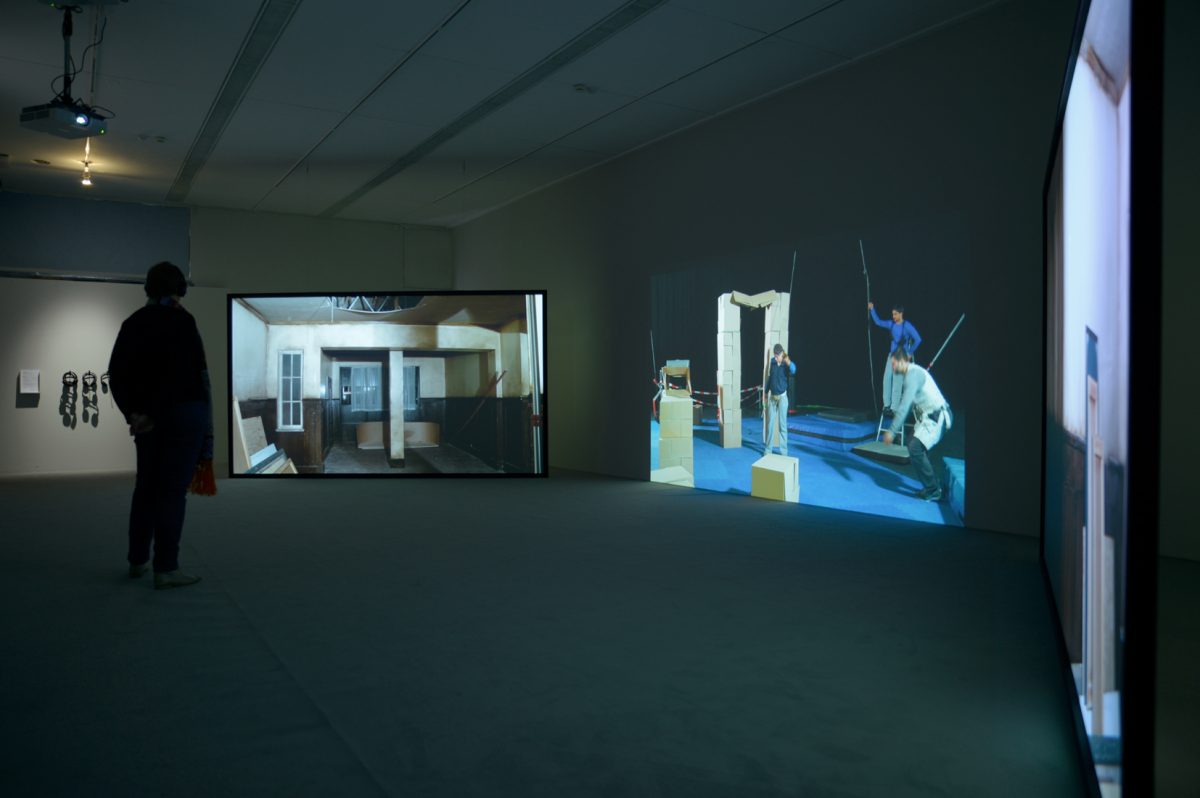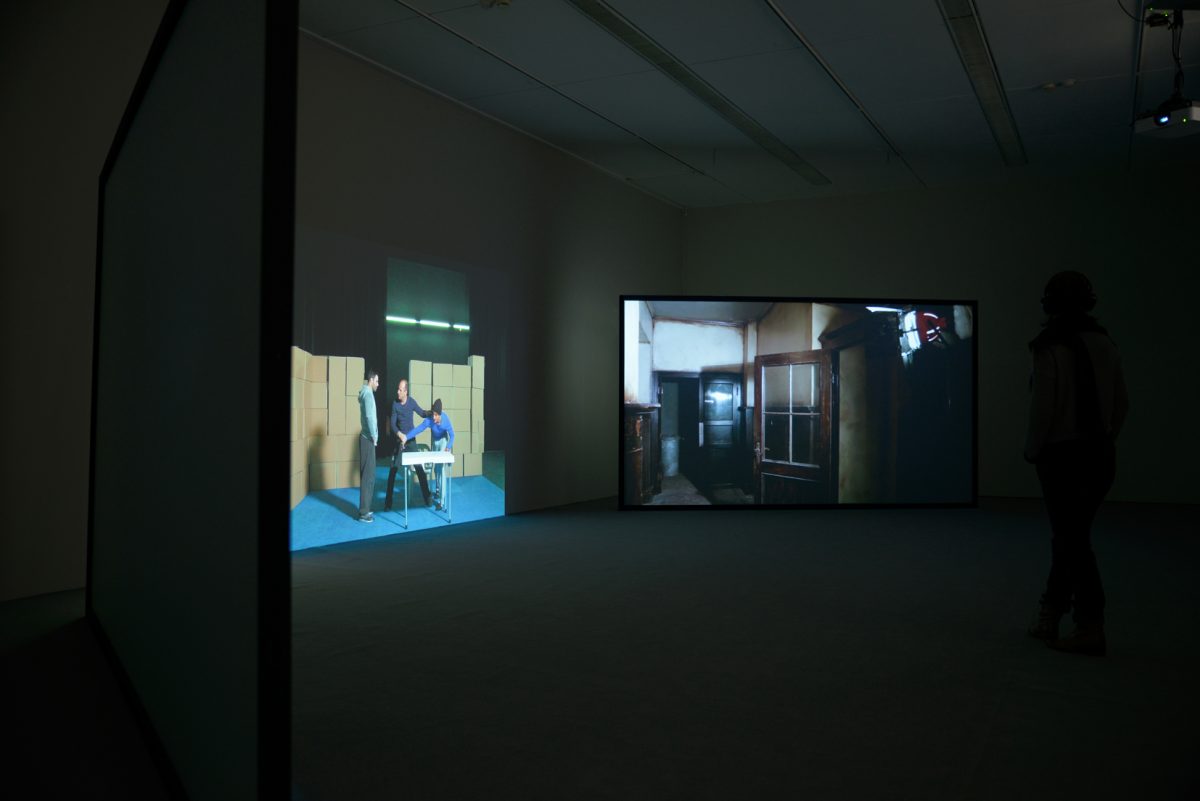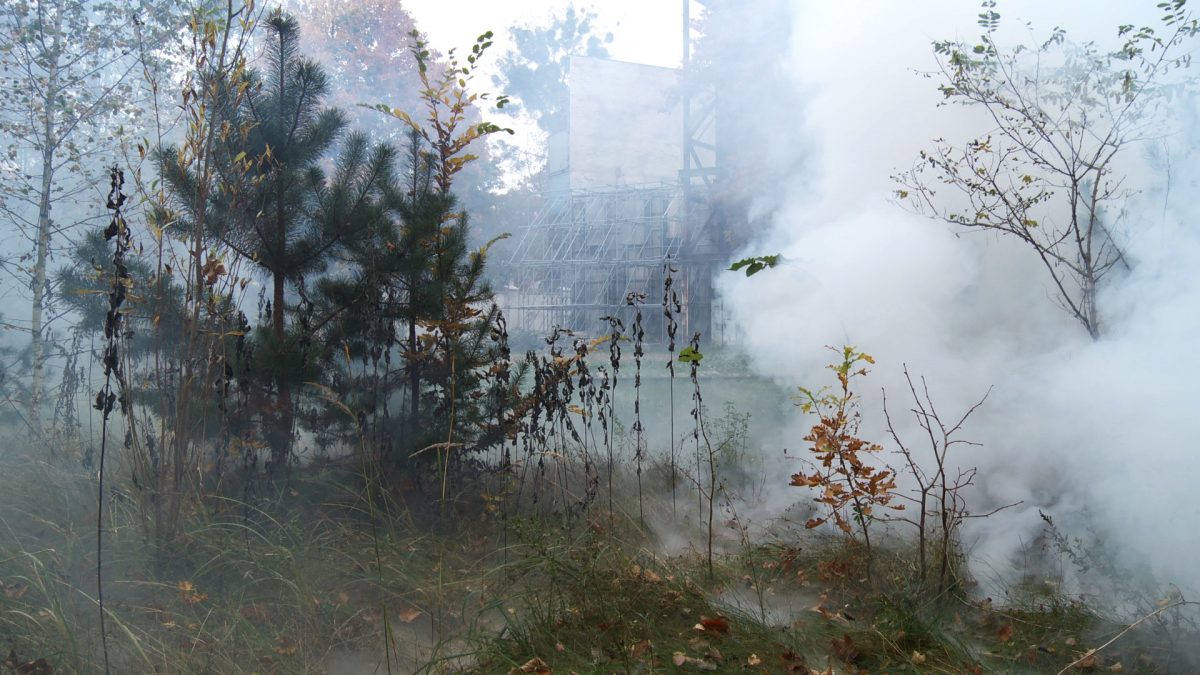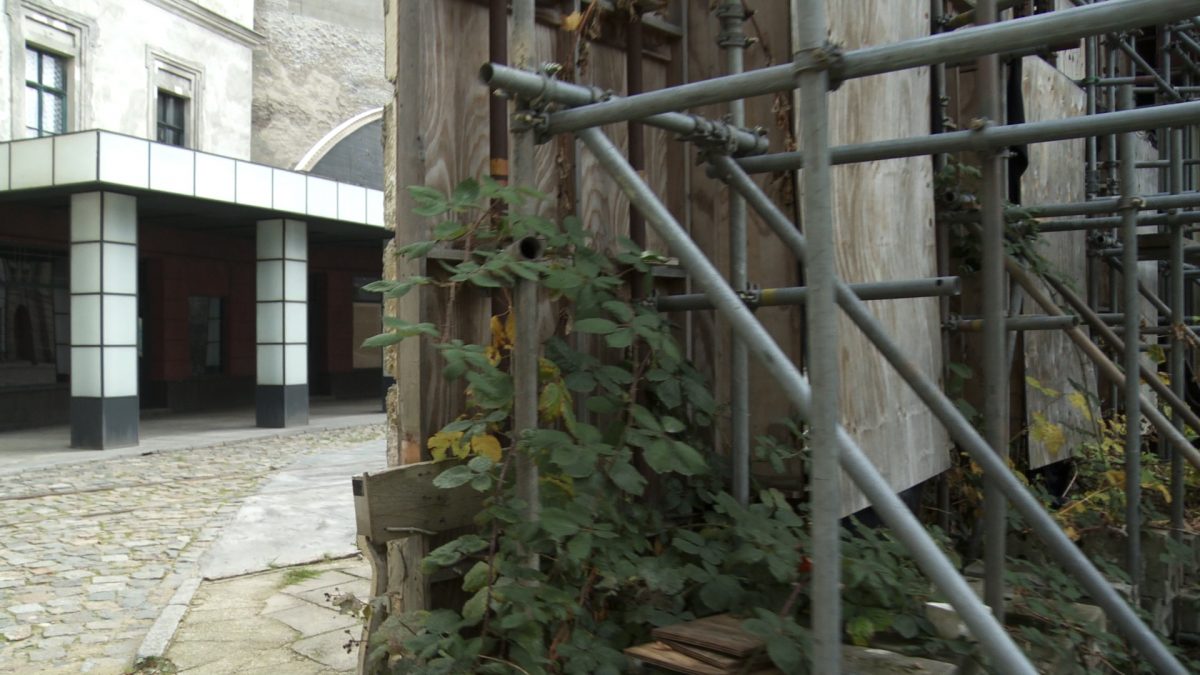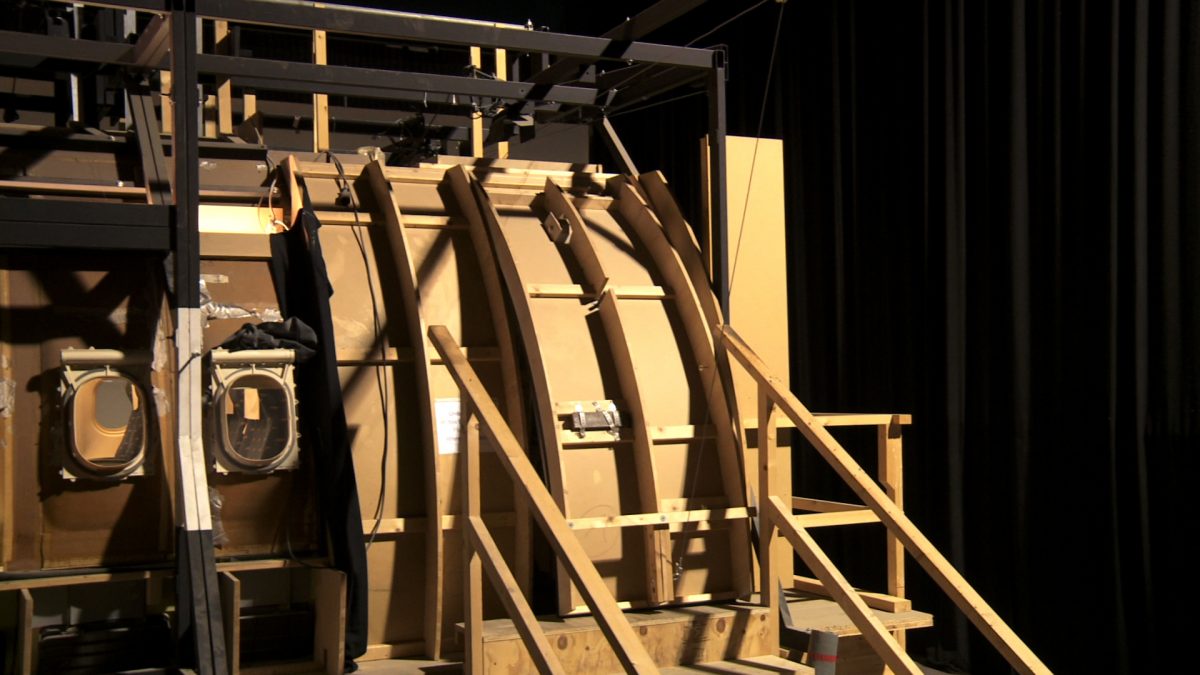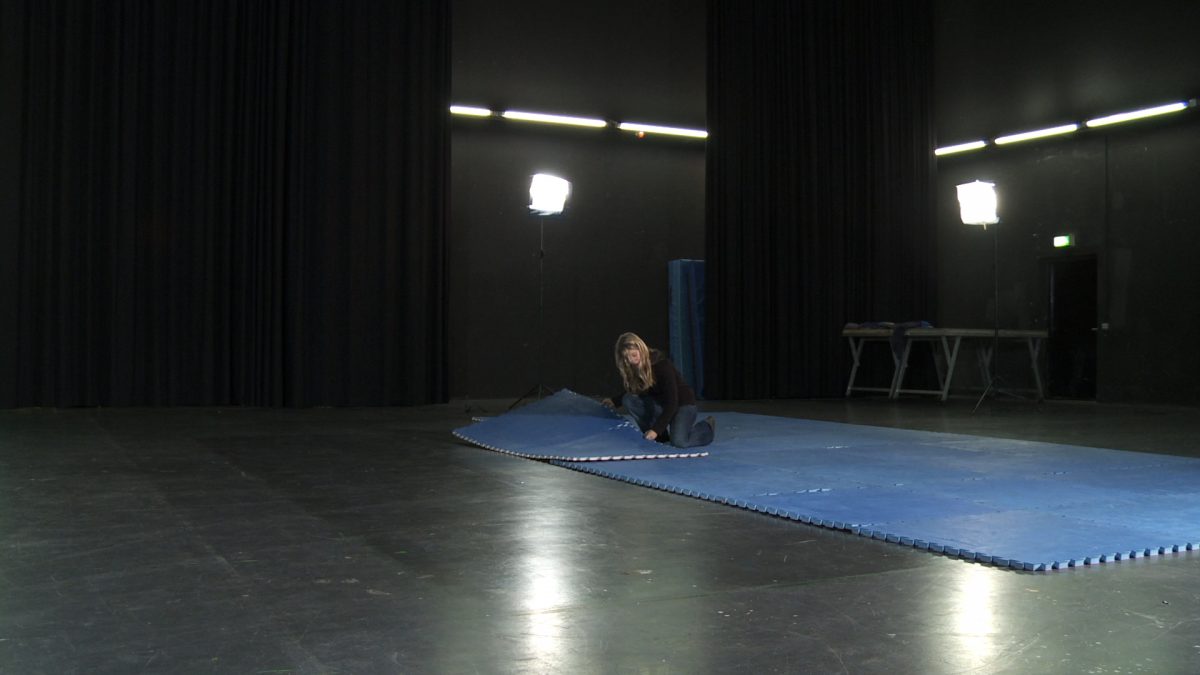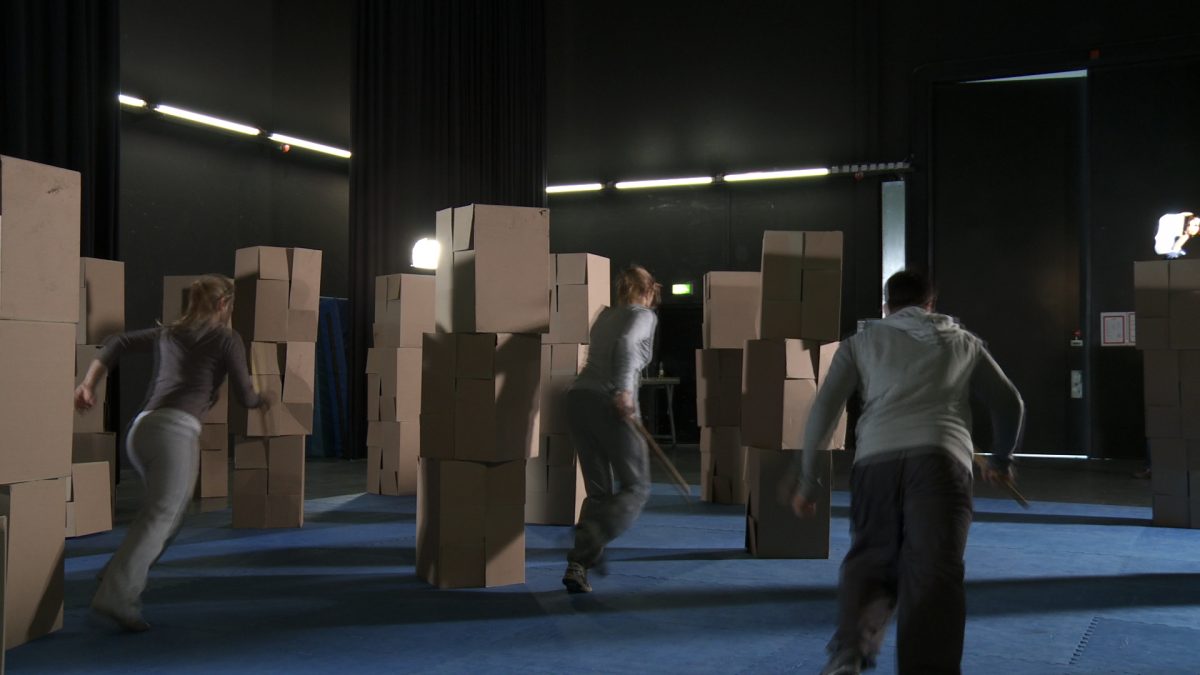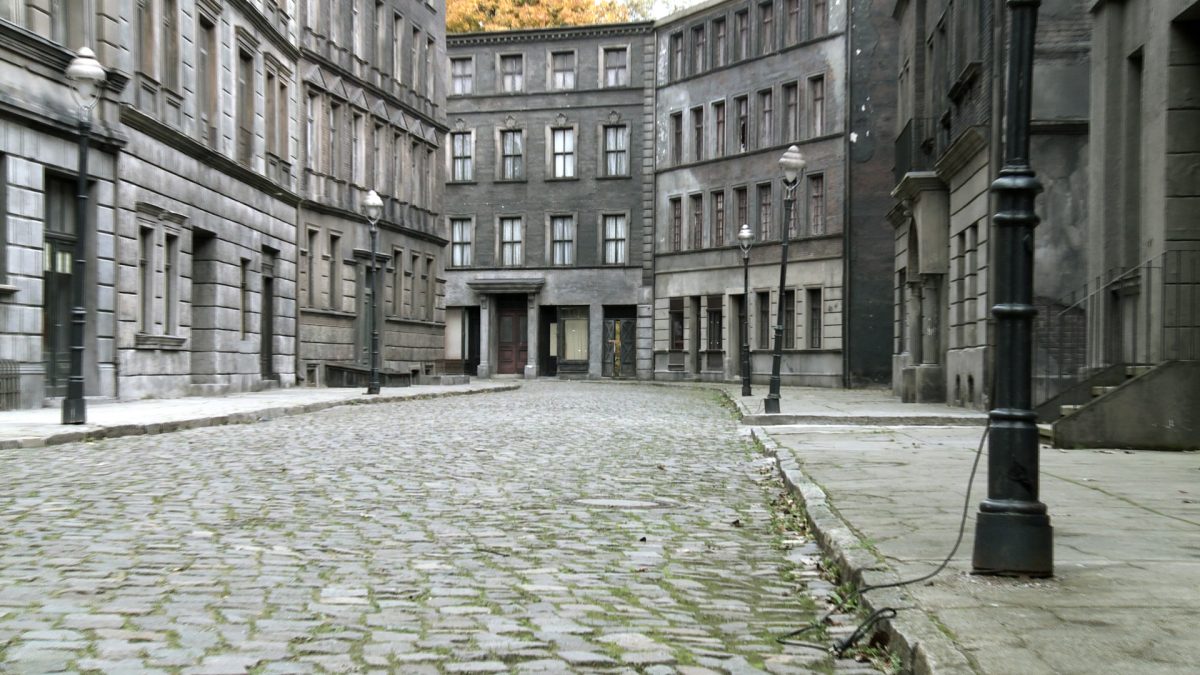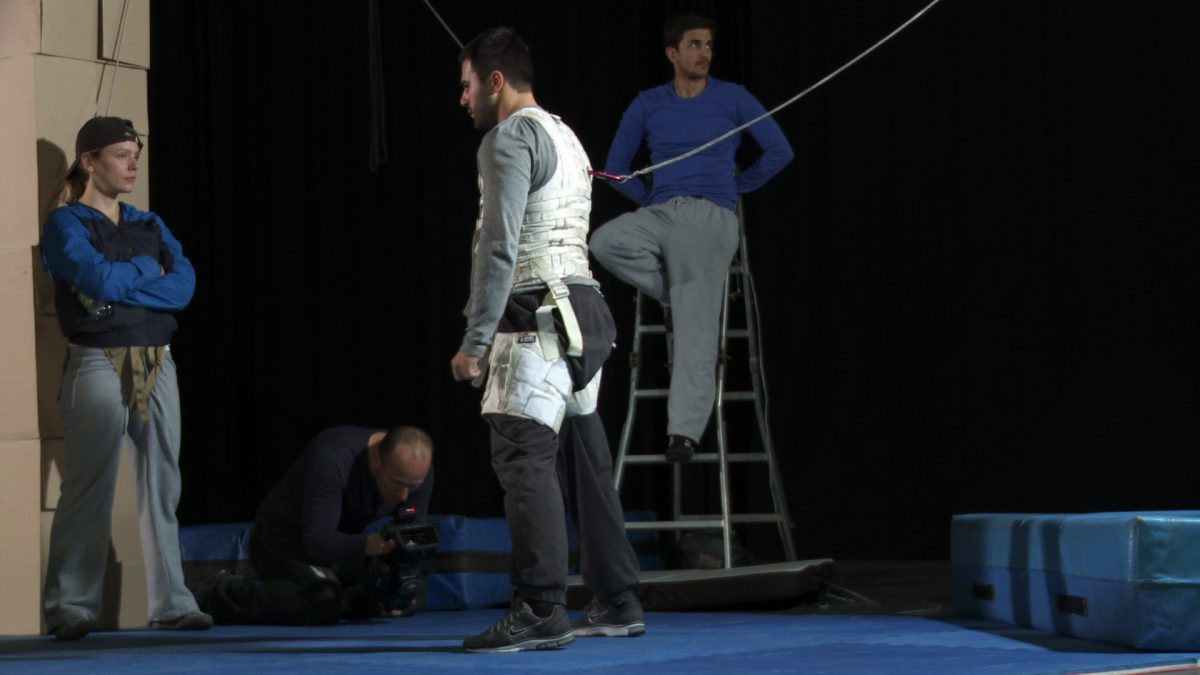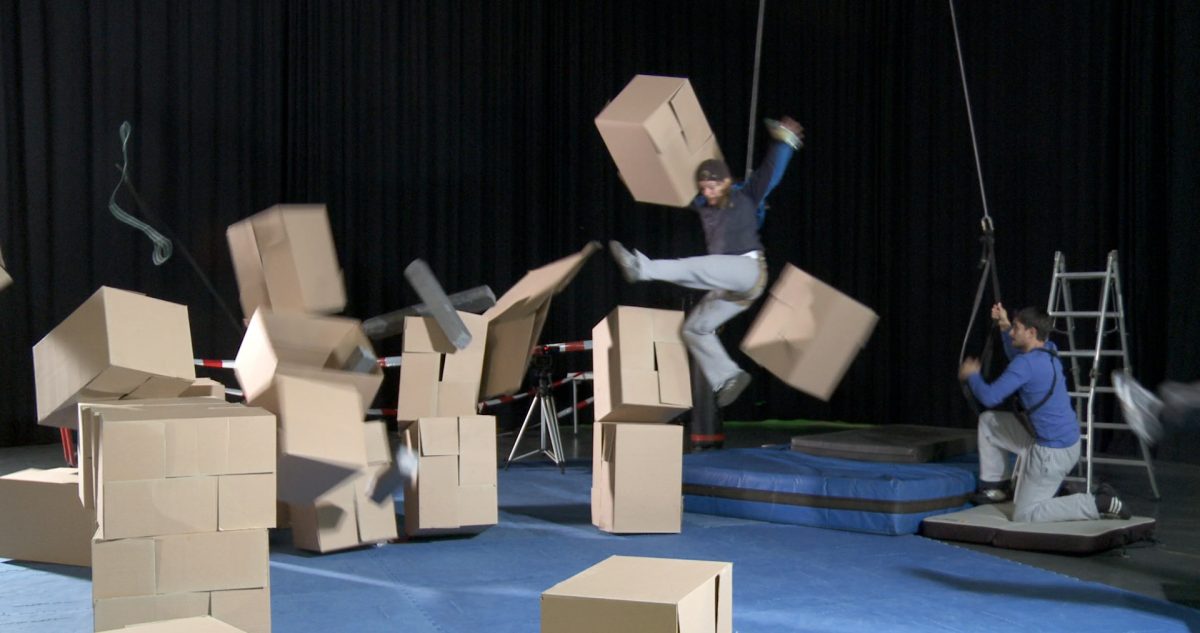Installation / 3 Canaux vidéo / 2 Ecrans avec cadre / Casques d’écoute sans fil / Hautparleurs / 28min. / 2012-2013
« Offscreen » prend pour point de départ le récit d’un jeune homme qui, en 2011, a passé 4 semaines de vacances organisées en Afghanistan et en Iran, en présence constante d’un garde du corps. En effet, le secteur du tourisme propose désormais des vacances dans des zones de conflits telles que l‘Afghanistan, l‘Irak, la Corée du Nord ou la Somalie. Ces vacances se vendent à renfort de slogans comme « Soyez là où ça se passe » ou « Comprendre les conflits de l‘intérieur ». Les activités prévues incluent entre autre la « participation au travail de reconstruction » ou encore des « travaux d‘assistance » sur place.
Cette branche de tourisme relève la forme extrême et inquiétante dont nous appréhendons les réalités de la guerre et la manière dont celles-ci sont traitées comme un bien de consommation, notamment par le secteur touristique.
Le récit reconstruit est raconté par un acteur, renforçant ainsi la sensation de fiction. Cette voix du narrateur constitue l’axe central de « Offscreen » qui guide le public, muni d’écouteurs, à travers l’espace d’exposition. Des images vidéo viennent compléter le texte. Le langage visuel crée une dimension supplémentaire, donnant lieu à un espace de réflexion. C’est la production cinématographique, les studios de Babelsberg à Potsdam, en Allemagne, qui serviront de support visuel. Les studios de cinéma constituent un lieu de production de réalités, un endroit où « l‘authenticité » se fabrique par les moyens les plus divers, les outils de simulation de réalité tels que le studio de Greenscreen, la réplique d‘un avion ou encore le décor extérieur – la Berlinerstrasse. Dans ces studios qui fournissent en version grand écran souvenirs, émotions et expériences de guerres historiques ou fictives, j’observe le cadre de leur mise en scène avec ma caméra.
Par ailleurs, j’ai filmé des cascadeurs et cascadeuses lors de « video previews » au studio à effets spéciaux. Les video previews sont des scènes d’entraînement qui ont lieu dans un décor simulé, et qui servent à la préparation avant le tournage final. Dans ce cadre précis, les cascades s’inspiraient du récit de voyage. Les cascadeurs, hommes et femmes, représentent le danger et l’action, qu’ils affrontent tout en prêtant leurs corps aux « originaux », les acteurs. Ils sont donc corps et copie, des corps qui n’existent que dans l’action, où ils symbolisent la maîtrise parfaite de (presque) tout danger, autant de facettes que j’associe au vacancier.
L‘installation consiste en trois projections vidéo, deux des projections se font sur des écrans encadrés et posés dans l‘espace comme un objet, ou encore comme le décor d‘une mise en scène. Ces deux projections font défiler des images contemplatives provenant des studios de Babelsberg, la Berlinerstrasse et la réplique d‘avion. Les images des cascadeurs, elles, sont directement projetées sur le mur. Ainsi, le spectateur est guidé à travers un paysage d’imitations et de reconstructions.
L’installation a été réalisée en trois versions, en anglais, en français et en allemand.
Filmé au Studio Babelsberg AG, Potsdam DE.
“Millefeuille” texte de Samuel Schellenberg
Installation / 3 Kanal Video / 2 Gerahmte Leinwände / Kabellose Kopfhörer / Lautsprecher / 28min. / 2012-2013 (deutsche Version 2014)
Ausgangspunkt von „Offscreen“ ist die Erzählung eines jungen Mannes von seinem vierwöchigen Pauschalurlaub 2011 in Afghanistan und im Iran. Urlaub in Krisengebieten wie Afghanistan, Irak, Nordkorea und Somalia sind die neusten Abenteuerversprechen der Tourismusbranche, die mit Schlagworten wie „Dabeisein“ oder „wirkliches Verstehen der Konflikte“ wirbt und auch das Mithelfen bei Aufbauarbeiten oder einen Einsatz bei Hilfswerken vor Ort in Aussicht stellt. Minenfelder räumen ist eines der Angebote „sinnvoller Arbeit“, die auf den mutigen Touristen warten.
Diese Tourismusbranche zeigt in extremer und beängstigender Form, wie Kriegsrealitäten verhandelt und nun auch im Tourismus als Konsumgut eingesetzt werden.
Der montierte Erzähltext wird von einem Schauspieler gesprochen und dabei neu interpretiert, um eine Verschiebung zu erzeugen. Diese Offstimme bildet den Mittelpunkt der Arbeit, sie begleitet die BesucherInnen über Kopfhörer durch die gesamte Installation. Der Text wird durch Videobilder ergänzt die – in der visuellen Sprache des Kinofilms gehalten – eine zusätzliche Ebene erzeugen, um Freiraum zur Reflexion zu schaffen.
Gedreht wurde dazu in den Filmstudios in Potsdam-Babelsberg. Die gleichen Apparaturen und Installationen allerdings, die normalerweise dazu dienen, die grossen Gefühle und Schauplätze der historisch-fiktiven Kriege im Grossformat zu liefern, wurden jetzt selbst thematisiert. Ich habe das Flugzeugset und die Aussenkulisse der „Berlinerstrasse“ mit der Kamera beobachtet, habe die Studio-Bauten gefilmt, die durch Kinofilme wie „Der Pianist“ zur visuellen Referenz des Kriegsfilmes wurden.
Weiter habe ich im Spezialeffekte-Studio Übungsszenen von StuntperformerInnen, die sogenannten Videopreviews, aufgezeichnet, die üblicherweise in simulierten Kulissen den Hauptdreh vorbereiten sollen. Als inhaltliche Ausgangslage für die Stuntszenen diente die Urlaubserzählung des jungen Mannes.
StuntperformerInnen stehen für Widerstand und Action gegenüber Gefahr. Sie leihen ihre Körper den Originalen, den SchauspielerInnen. Sie sind Körper-Kopien und sie symbolisieren das Perfekte, das sich (fast) allen Gefahren stellen kann. Diese Aspekte verbinde ich mit dem Kriegsurlauber.
Die Aufnahmen der Studios werden auf zwei Projektionswände projiziert, die nun Kulissen im Raum gleichen. Die Aufnahmen der Stuntleute werden direkt auf die Wand projiziert.
Von der Installation sind drei Versionen vorhanden, eine in englischer, eine in deutscher und eine in französischer Sprache.
Gefilmt in den Studio Babelsberg AG, Potsdam DE.
« Offscreen – Wenn Bilder jenseits ihrer Ränder zurückblicken » Text von Sigrid Adorf
Installation / 3 Channel video / Two framed screens / Wireless headsets / Speakers / 28min. / 2012-2013
“Offscreen” is based on the account of a young man who went on a package holiday to Afghanistan and Iran in 2011. Holidaying in crisis zones, such as Afghanistan, Iraq, North Korea and Somalia is the latest holiday offer from the tourist industry. Promotional slogans such as “Be there and Gain a real understanding of conflicts” are used, while “Help rebuild” and “Get your hands dirty” appeal to tourists wishing to participate in on-site aid efforts. Getting personally involved in “useful work”, for example clearing landmine fields, is just one of the tours awaiting travellers. This form of tourism is an extreme and worrying example of how we deal with the realities of war, and of how tourism now deals with it as a consumer good.
An actor reinterpret the narrative text that I have edited, in order to create a shift here as well. This voice-over takes centre-stage in “Offscreen”, it takes the visitors through the exhibition via headphones.
The text has been complemented and expanded upon with filmed images. In this visual language, I establish yet another layer which creates space for reflection. To do this, I use the motion picture and its production infrastructure, the film studio in Babelsberg Potsdam. These production sites, which have previously been used to make blockbuster films about historical and fictive wars, evoking a variety of memories, feelings and experiences, were where I filmed for this project. With my camera, I observed the different scenes including the plane set and the “Berliner Strasse” film set, which have become visual references for war films thanks to motion pictures such as “The Pianist”.
I also filmed stunt artists rehearsing scenes in the special effects studio during their preparation, in a simulate setting, for the actual shooting (so-called video previews). They used the holiday narrative as the context for the scenes. Stunt artists represent danger and action – they brave danger and thus lend their bodies to the original person, the actor. In this way, stunt performers are body doubles, and as bodies that are exclusively in danger and in action, they symbolise the perfection that can face up to almost (any) danger. I relate these aspects to the war tourists.
In the installation, the studio recordings are projected onto two framed screens, which in turn are in the form of a stage scenery in the exhibition room. The recordings of the stunt performers are projected directly onto the wall. This creates a landscape of imitations and reconstructions within which the visitor may move.
There are three versions of the installation: one in English, one in German and one in French.
Filmed at the Studio Babelsberg AG, Potsdam Germany.


